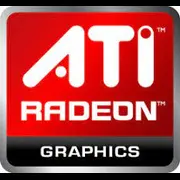ATI Radeon HD 4870

ATI Radeon HD 4870: A Retrospective of a Legend and Its Place in 2025
Introduction
Released in 2008, the ATI Radeon HD 4870 was a true breakthrough for its time. This graphics card not only challenged NVIDIA's dominance but also set new performance standards in the budget segment. However, in 2025, the HD 4870 has become an artifact of a bygone era, more interesting to enthusiasts and collectors than to gamers. Let’s delve into what made it memorable and why today it can only be viewed in a historical context.
1. Architecture and Key Features
RV770 Architecture: The Foundation of Power
The HD 4870 is built on the RV770 architecture with a 55 nm manufacturing process. It included 800 stream processors—a formidable number for the late 2000s. The card supported DirectX 10.1 and OpenGL 3.3, allowing it to perform confidently with games of its time.
Lack of Modern Technologies
The HD 4870 arrived long before the era of ray tracing (RTX), upscaling (DLSS, FidelityFX), and other innovations. Its functionality was limited to basic rendering features such as anti-aliasing and tessellation. For 2025, this renders the card unsuitable for modern games and professional tasks that require support for DirectX 12 Ultimate or Vulkan.
2. Memory: Speed and Limitations
GDDR5—The Revolution of 2008
The HD 4870 was one of the first to use GDDR5 memory with an effective clock speed of 3.6 GHz (900 MHz physical). It came with either 512 MB or 1 GB of memory (depending on the variant), and a 256-bit memory bus. The bandwidth reached 115.2 GB/s, which allowed it to outrun even NVIDIA's flagship models in 2008.
Issues in 2025
For modern games and applications, 512 MB/1 GB of memory is catastrophically low. For instance, even the minimum requirements for games in 2025 start at 4-6 GB of VRAM. Furthermore, GDDR5 falls short in energy efficiency and speed compared to modern standards like GDDR6X and HBM3.
3. Gaming Performance: Then and Now
The Splendor of 2008–2010
At its peak, the HD 4870 delivered 30–60 FPS in titles like Crysis (Medium, 1080p), Fallout 3 (Ultra, 1080p), or Left 4 Dead (Max, 1440p). The 4K resolution was not yet relevant, but the card managed 2560×1600 in less demanding games.
The Realities of 2025
Modern titles such as Cyberpunk 2077: Phantom Liberty or Starfield require at least 4 GB of VRAM and support for DirectX 12, even at low settings in 1080p. The HD 4870 will not only fail to deliver smooth FPS but also won't run many projects due to outdated APIs.
4. Professional Tasks: Unfortunately Irrelevant
Limited Support
The HD 4870 supported OpenCL 1.0, but its computational power (1.2 TFLOPS) seems laughable today, even compared to budget GPUs like the Radeon RX 6400 (up to 4 TFLOPS). It is insufficient for video editing in DaVinci Resolve or 3D modeling in Blender.
Lack of CUDA
For tasks that require CUDA (for example, rendering in OctaneRender), the HD 4870 is useless — this technology remains an NVIDIA exclusive.
5. Power Consumption and Heat Emission
TDP of 150W: Modest for 2008, Wasteful Today
By 2025 standards, the HD 4870 is inefficient. Its TDP (150W) is comparable to modern mid-range GPUs (like the RX 7600 at 165W), but its performance is several times lower.
Cooling and Cases
The stock cooling system for the HD 4870—a single-fan turbine—often overheated under load. In 2025, stable operation will require:
- A case with good ventilation (at least 2 intake fans).
- Replacement of thermal paste and cleaning of the heatsink (if the card is used in a collector's build).
6. Comparison with Competitors
2008: Battle with NVIDIA GTX 260/280
- GTX 260: 10-15% slower in games but with better PhysX support.
- GTX 280: $100 more expensive than the HD 4870 but 20% more powerful.
2025: Budget Alternatives
- Radeon RX 6400 ($150): 3-4 times faster, with FSR 3.0 support, and 4 GB of GDDR6.
- GeForce GTX 1650 ($160): CUDA cores, DLSS, and 4 GB of GDDR5.
7. Practical Advice for Enthusiasts
Power Supply
Even for the HD 4870 in 2025, a 500W power supply (80+ Bronze) is relevant due to peak power consumption.
Compatibility
- Platform: Requires a motherboard with PCIe 2.0 x16. Modern PCIe 4.0/5.0 is backward compatible, but performance won’t improve.
- Drivers: Official support from AMD ended in 2013. For Windows 10/11, modified drivers will have to be used.
8. Pros and Cons
Pros:
- Historical significance: the first mass-produced card with GDDR5.
- Outstanding price/performance in 2008-2010.
Cons:
- Does not support DirectX 12, Vulkan, or ray tracing.
- Insufficient VRAM for modern tasks.
- High power consumption relative to performance.
9. Final Conclusion: Who Should Consider the HD 4870 in 2025?
This graphics card is suitable for:
- Collectors looking to assemble retro PCs.
- Enthusiasts experimenting with 2000s games on original hardware.
- Office tasks, where a display output is needed (but even here, integrated graphics from the Ryzen 5 8600G would be better).
For modern gaming, video editing, or 3D work, the HD 4870 is useless. Its legacy serves as a reminder of how quickly the technological landscape evolves.
Price in 2025: New HD 4870 units are no longer produced. On the secondary market (eBay, retro communities), the price ranges around $30–$50.
If you're looking to indulge in nostalgia or build a PC hardware museum, the HD 4870 is worthy of attention. For everything else, modern solutions are available.
Basic
Memory Specifications
Theoretical Performance
Miscellaneous
Benchmarks
Compared to Other GPU
Share in social media
Or Link To Us
<a href="https://cputronic.com/en/gpu/ati-radeon-hd-4870" target="_blank">ATI Radeon HD 4870</a>